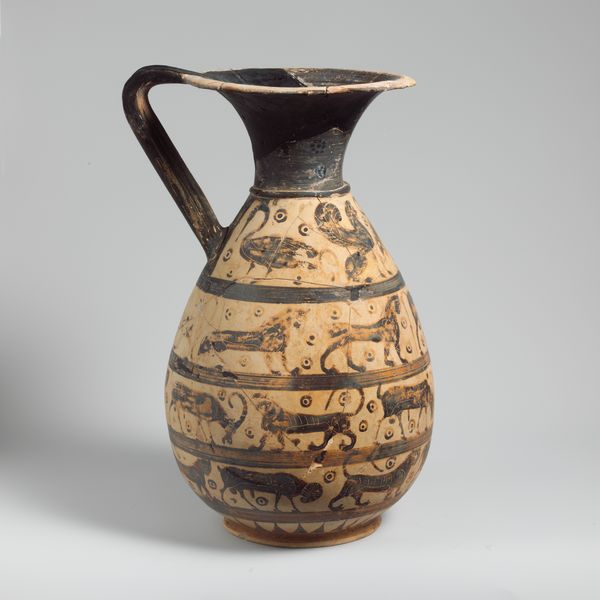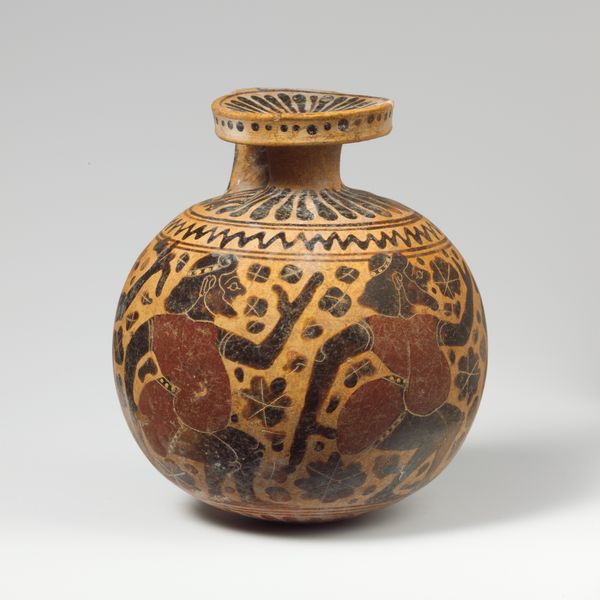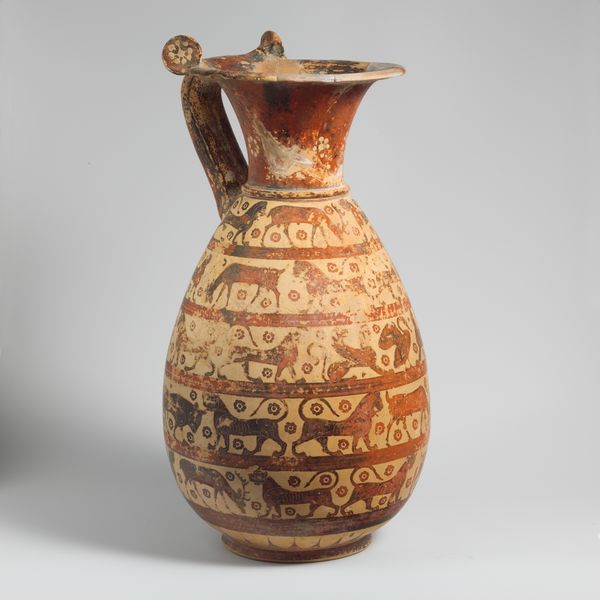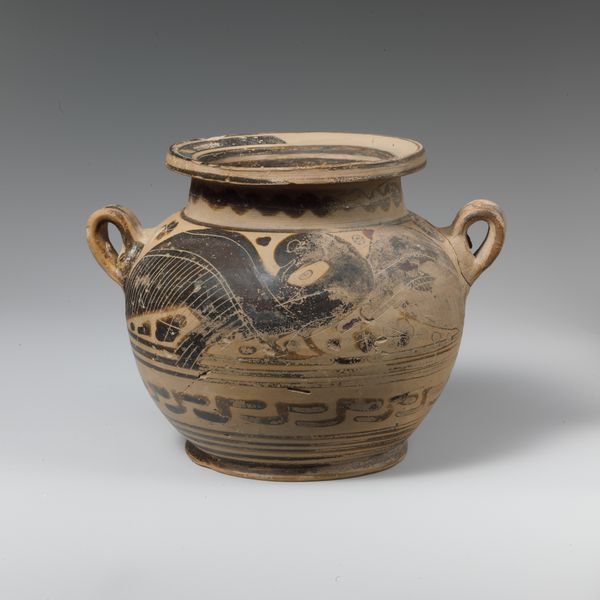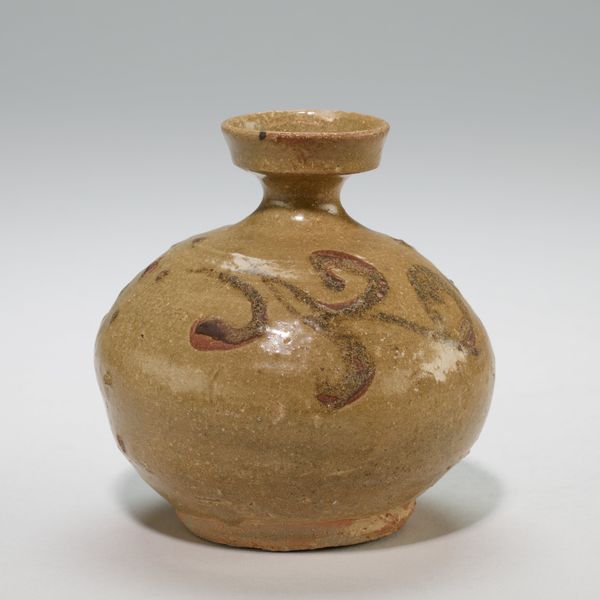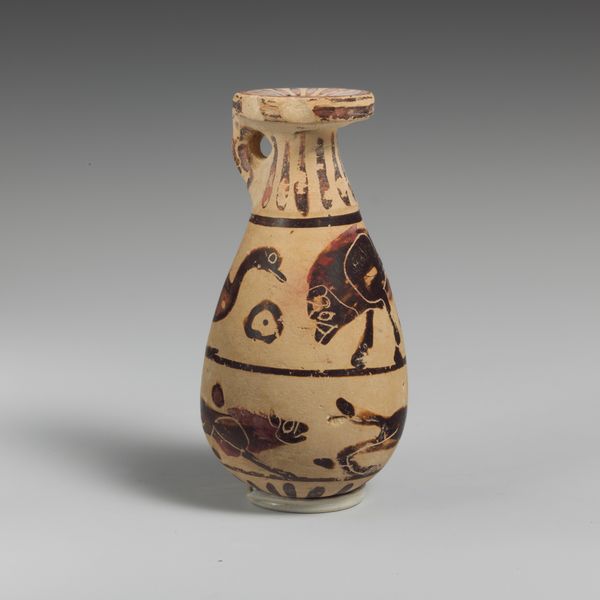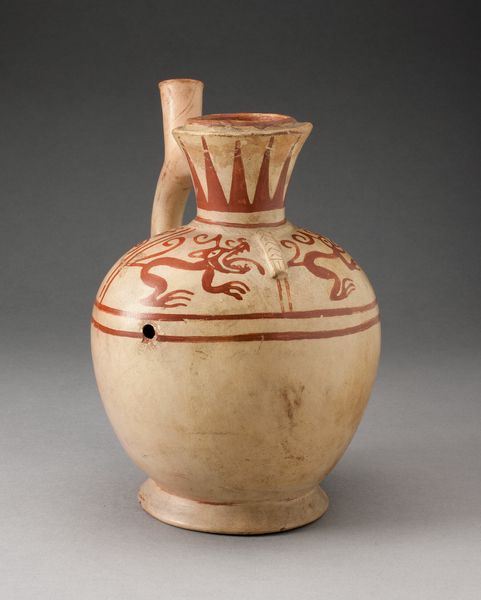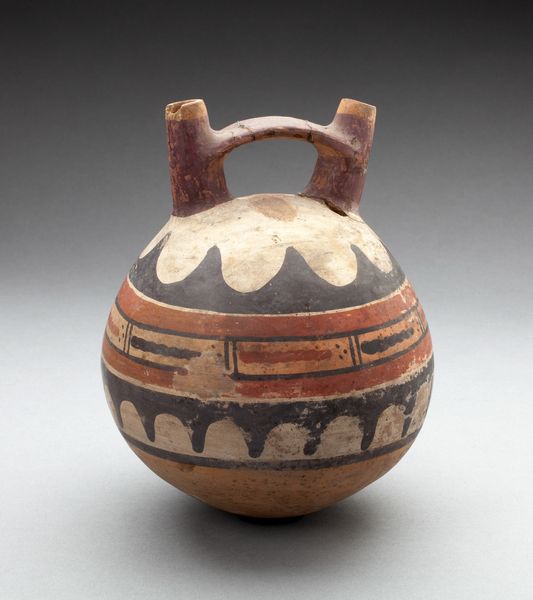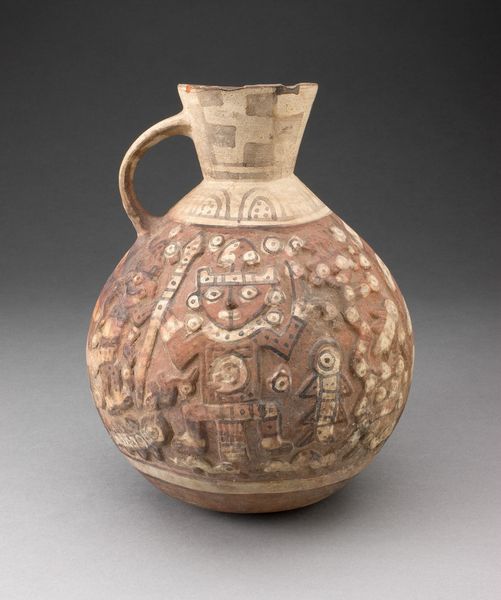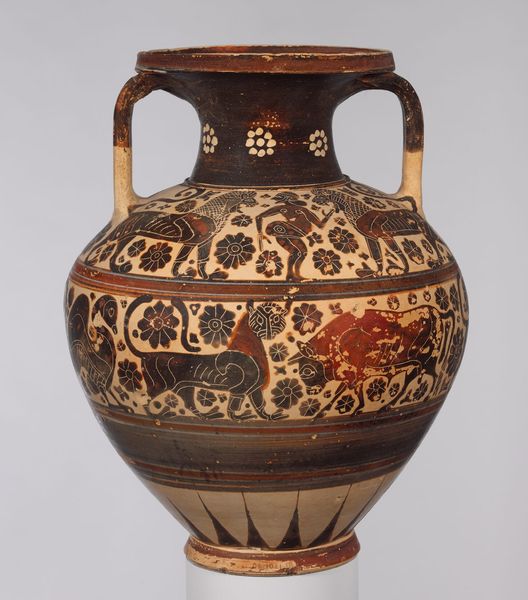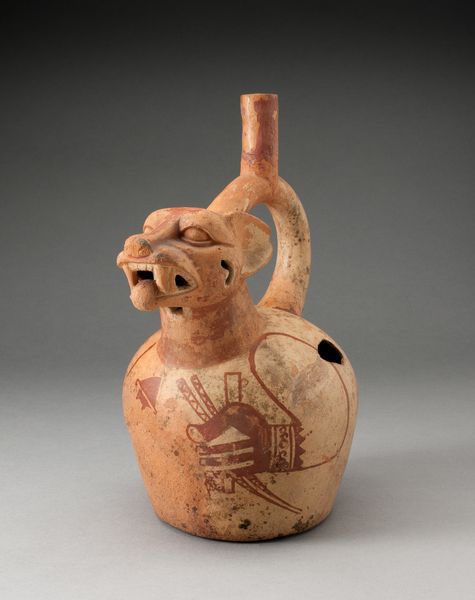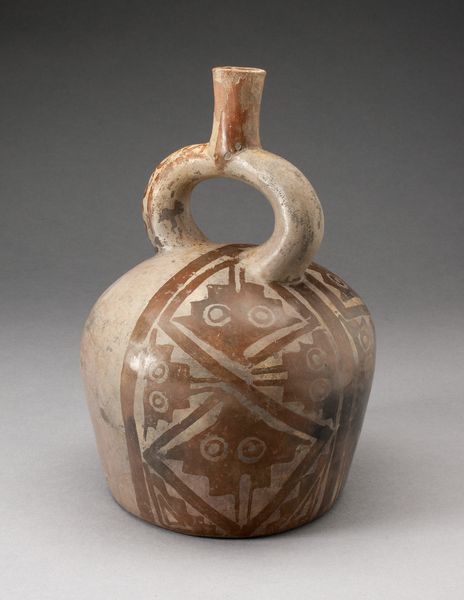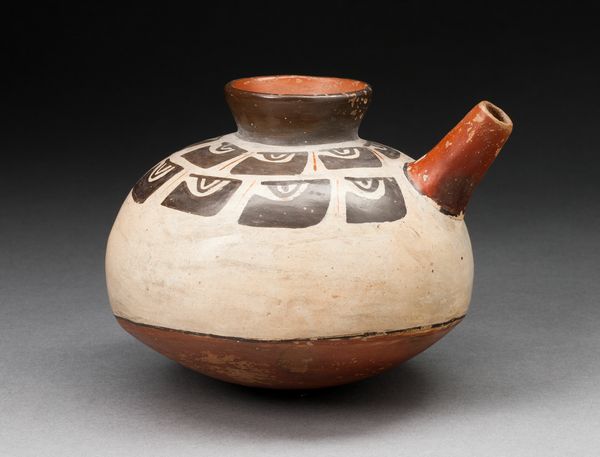
drawing, ceramic
#
portrait
#
drawing
#
greek-and-roman-art
#
ceramic
#
figuration
#
roman-art
#
ancient-mediterranean
#
ceramic
#
men
Dimensions: H.: 2 1/4 in. (5.7 cm)
Copyright: Public Domain
Curator: Look at this remarkable example of ancient craftsmanship: a terracotta aryballos, or oil flask, dating back to 620 BC. Editor: Immediately, I'm struck by how compact and vibrant it is. Despite its age, the imagery seems quite lively. There’s something almost playful about the figures. Curator: It's amazing, isn't it? The Metropolitan Museum of Art attributes it to an anonymous artist of the period. Think of the cultural context: such vessels held perfumed oil, essential for athletes and personal grooming, integral parts of social life. Editor: The dark figures contrasted against the pale clay ground certainly draws the eye. Can you tell me about the symbolic weight of some of these figures depicted? The human riding the...is that a bull? Curator: Likely so! It certainly reflects a particular intersectional power dynamic – humanity asserting dominance over the natural world, arguably revealing societal attitudes about control and labor that continue to be debated today. Editor: And the rosette patterns above...radiating light or divinity, perhaps? It’s as if each element carries not just aesthetic purpose but also layers of coded meaning for its contemporary audience. I wonder what these scenes would evoke in their minds? Curator: Precisely! This wasn't just decoration; it was about communicating values, narratives, hierarchies, within a very specific cultural frame. It served both practical and representational functions. The visual and the visceral linked directly. Editor: In a world without photography, imagine this portable image acting almost as a miniature monument or communal reminder. I find it incredibly moving that objects like these survived for us to unravel their cultural memory. Curator: Absolutely. Consider, too, who had access to such crafted items. Likely, the elite – its imagery subtly reinforces those prevailing hierarchies. So art not as pure beauty, but rather caught in society’s complexities. Editor: Seeing art this way opens such fascinating dialogues on agency, identity, and cultural legacy, making us ask complex questions about the legacies that shaped our present. Curator: And now perhaps you notice that more in your world. I, now, also consider where it has landed now. Its trip, really, through the centuries.
Comments
No comments
Be the first to comment and join the conversation on the ultimate creative platform.
